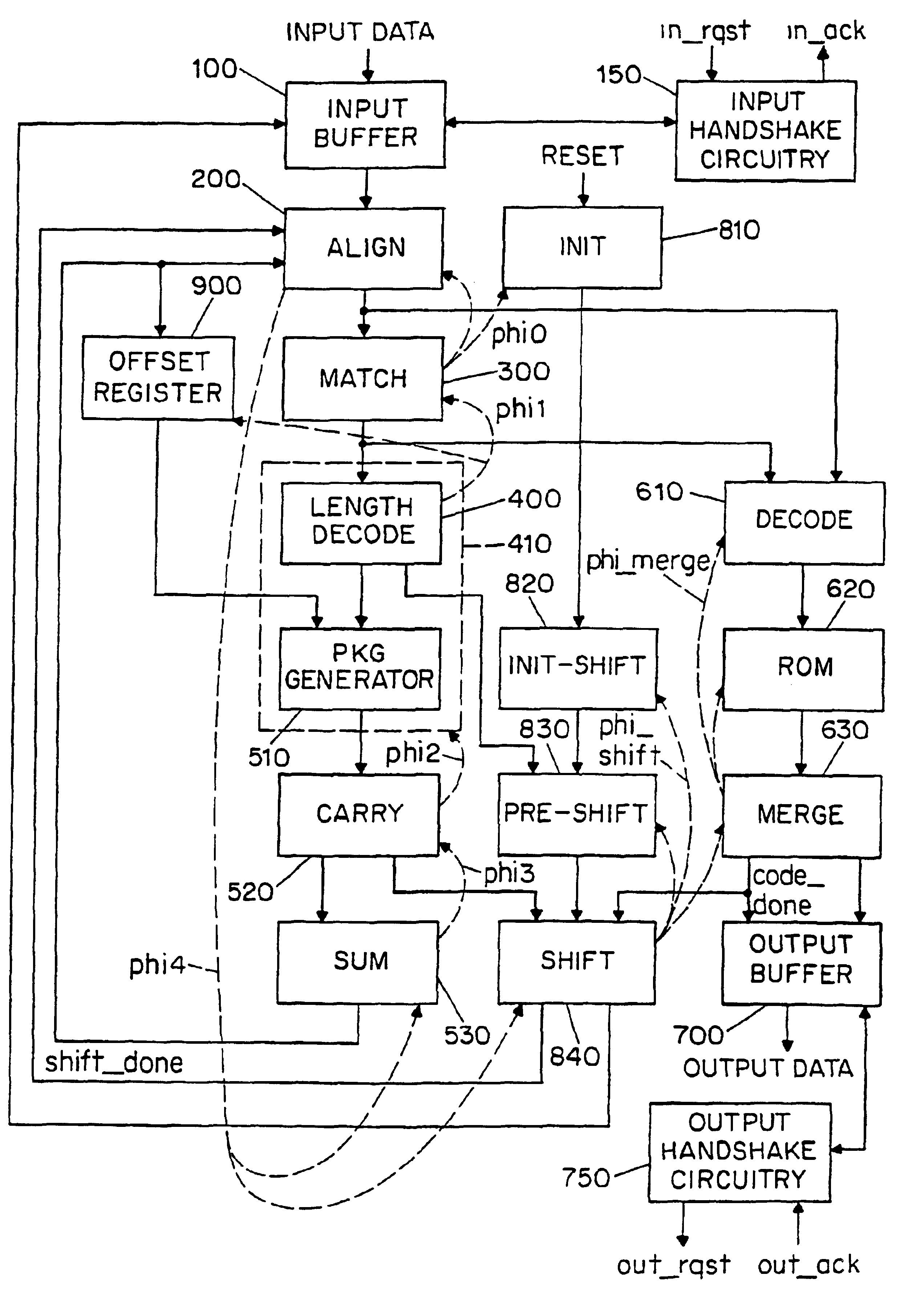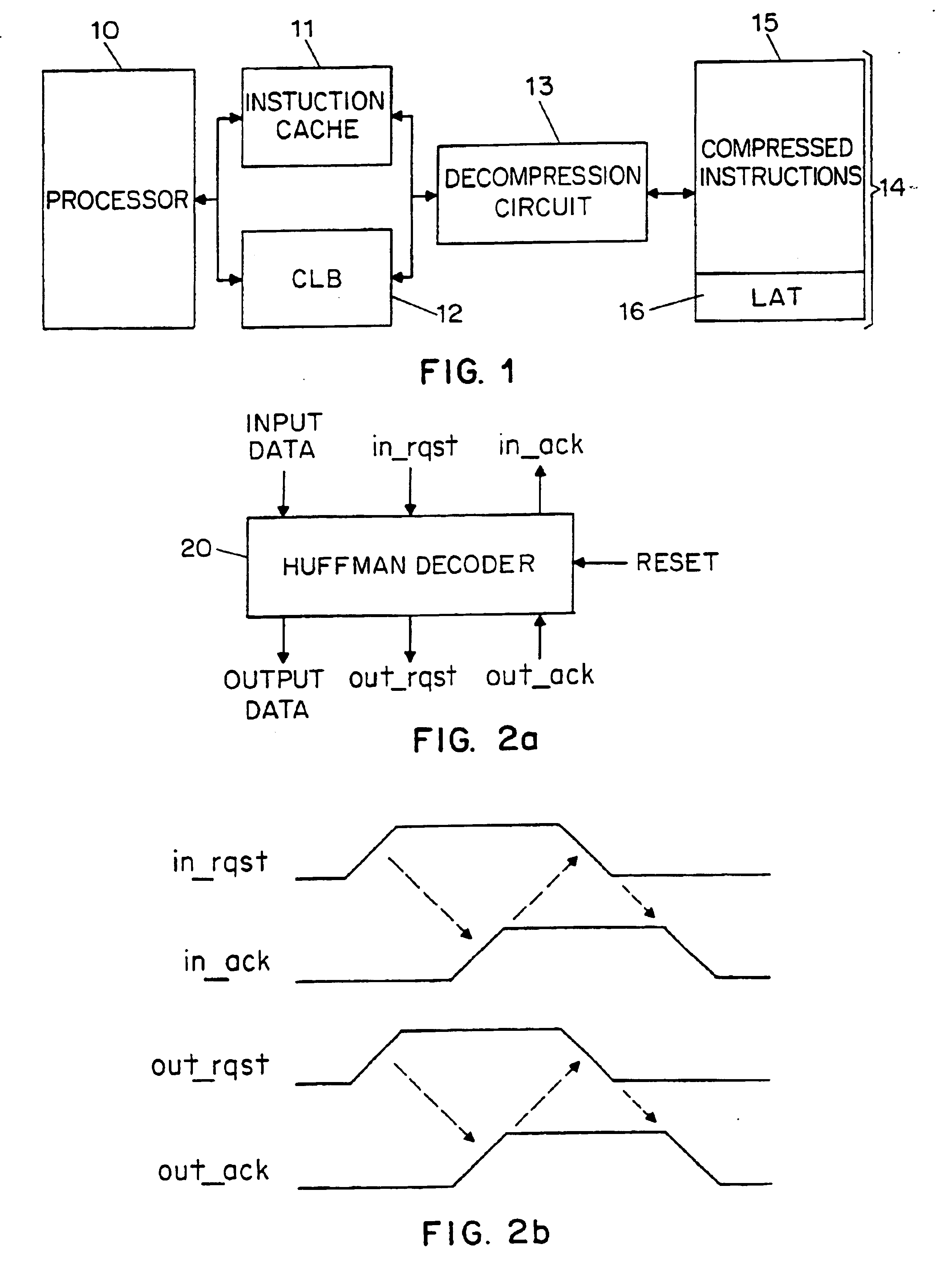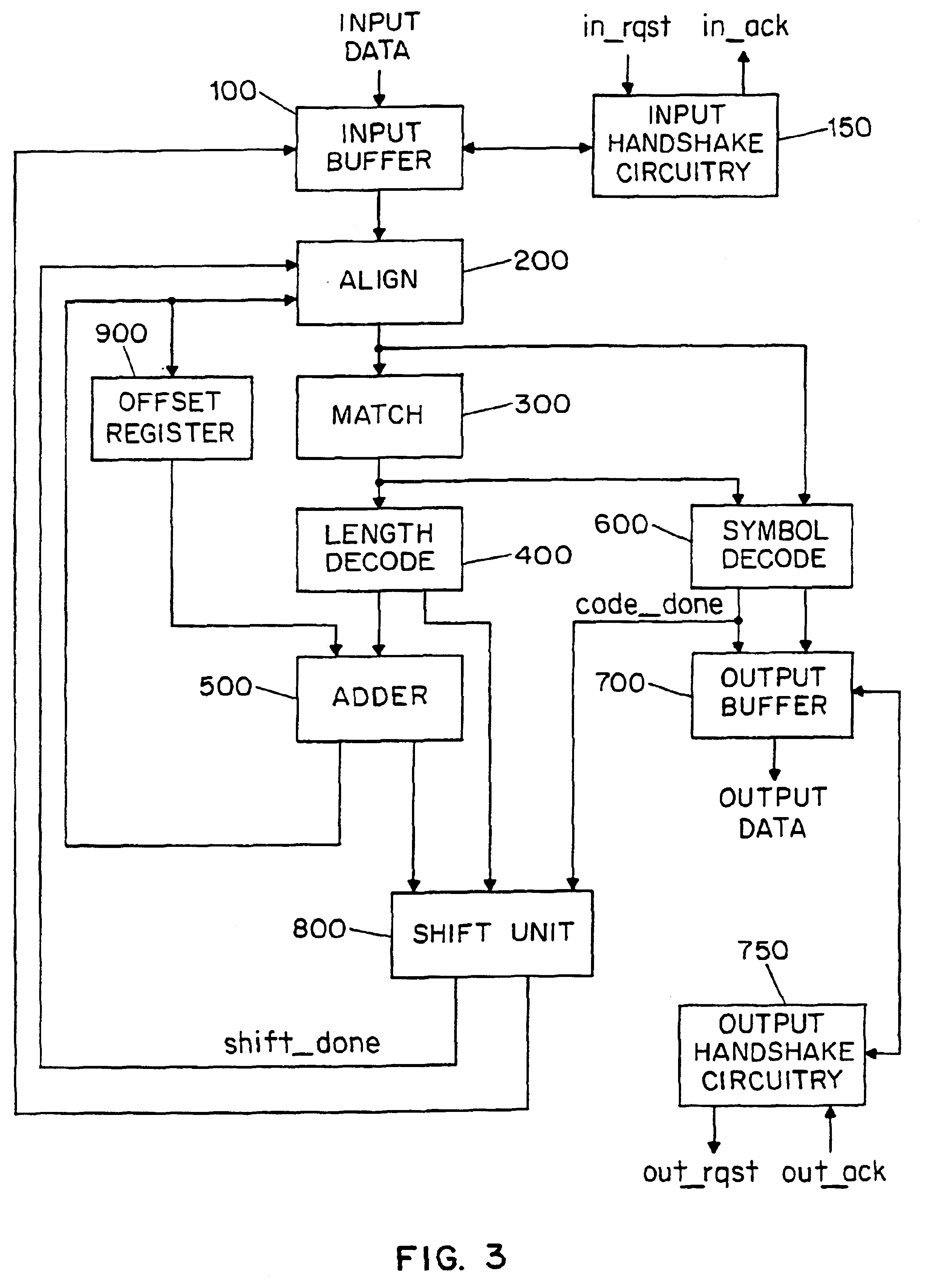Variable-length, high-speed asynchronous decoder circuit
a high-speed asynchronous and decoder technology, applied in the field of asynchronous decoder circuits, can solve the problems of high-speed circuit problems, high cost, and high cost, and achieve the effect of improving the throughput ra
- Summary
- Abstract
- Description
- Claims
- Application Information
AI Technical Summary
Benefits of technology
Problems solved by technology
Method used
Image
Examples
Embodiment Construction
The present invention will be described in regard to a compressed-code embedded system. An embedded system is a system that incorporates microprocessors, or microcontrollers, yet is not itself a general-purpose computer. Embedded systems are now extremely widespread and are included in, for example, controllers for automobiles, airplanes, and portable consumer electronics. These systems typically include a microprocessor or microcontroller, which executes a stored program determined by the system designer. The instruction memory is either integrated on the same chip as the microprocessor or microcontroller, or is external.
Practical embedded systems are often limited by constraints on size, weight, power consumption and price. In particular, for low-cost and high-volume systems (such as portable consumer electronics systems), the cost of the system is often closely tied to the total area of the circuitry contained in the system. In such systems, a significant percentage of the area m...
PUM
 Login to View More
Login to View More Abstract
Description
Claims
Application Information
 Login to View More
Login to View More - R&D
- Intellectual Property
- Life Sciences
- Materials
- Tech Scout
- Unparalleled Data Quality
- Higher Quality Content
- 60% Fewer Hallucinations
Browse by: Latest US Patents, China's latest patents, Technical Efficacy Thesaurus, Application Domain, Technology Topic, Popular Technical Reports.
© 2025 PatSnap. All rights reserved.Legal|Privacy policy|Modern Slavery Act Transparency Statement|Sitemap|About US| Contact US: help@patsnap.com



